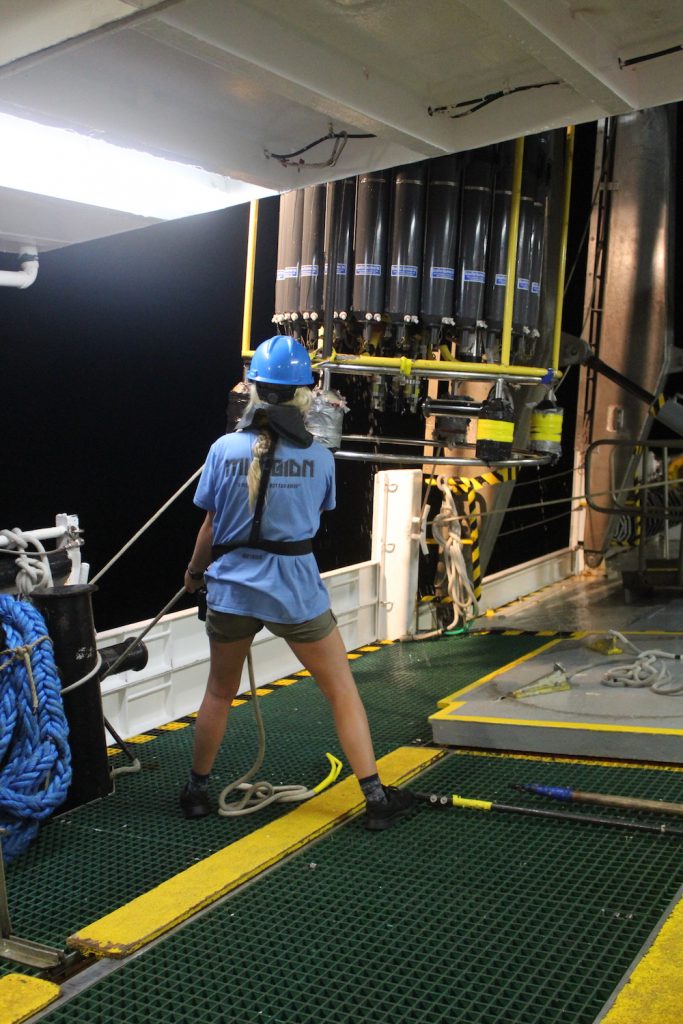Follow along as our scientists conduct research at sea
First day of sampling
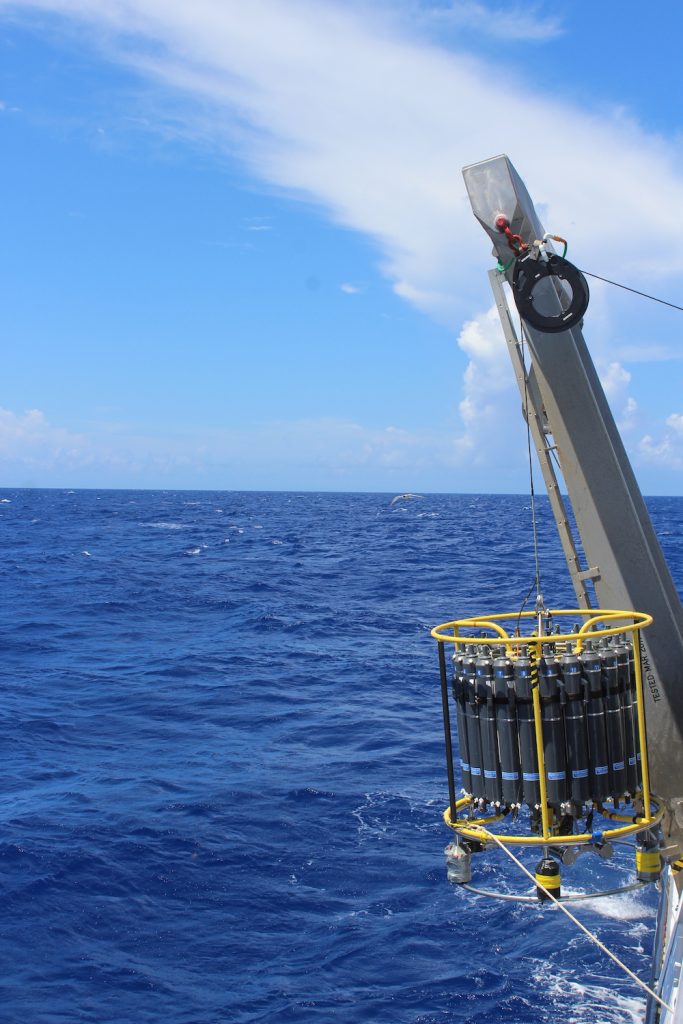
After about 5 hours of traveling on the relatively calm waters of the Atlantic Ocean we reached the BATS station. This nondescript spot 55 miles off the shore of Bermuda would look like any other point in this vast sea to the average person but to the scientists aboard the R.V. Atlantic Explorer it is where they will spend the next six days collecting and analyzing deep water samples.
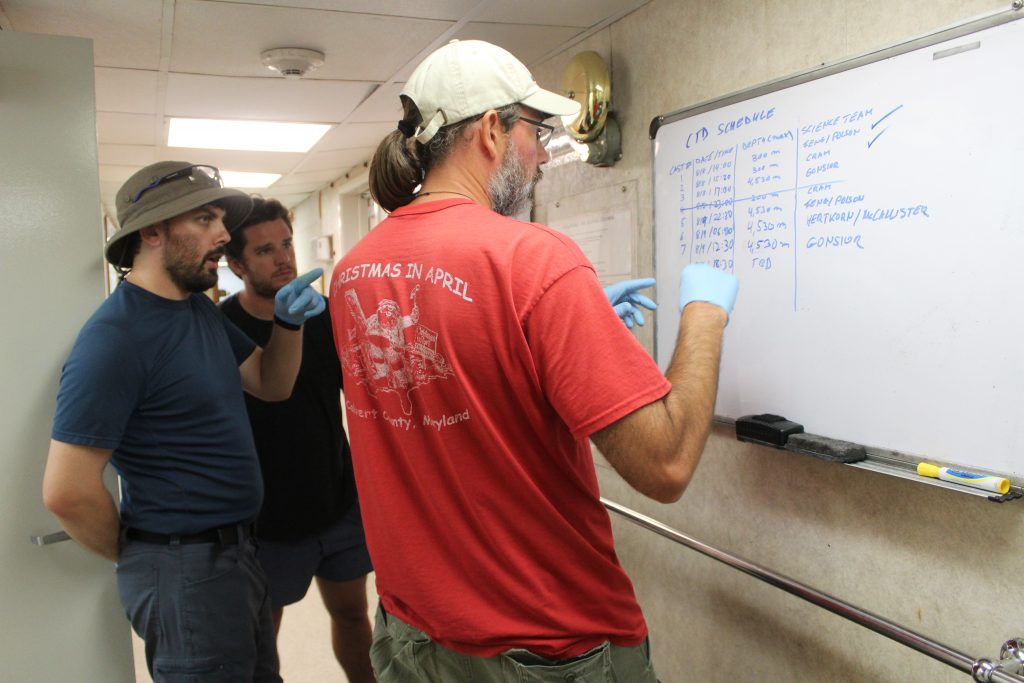
Jacob Cram, Dan Fucich and Michael Gonsior discuss cruise scheduling
A loose schedule is written on a white board in the main hall between labs to keeping everyone up to date on sampling times. Scientists are scattered around the boat cleaning and preparing equipment.
Around 1:15 p.m. the bulky CTD structure, the main sampling device being used on this cruise, is lifted by a crane on the stern of the ship and slowly lowered into the water as the boat continues to rock and shift its weight from side to side.
After 45 minutes, the CTD returns onto deck and once its safely on deck the scientists spring into action.
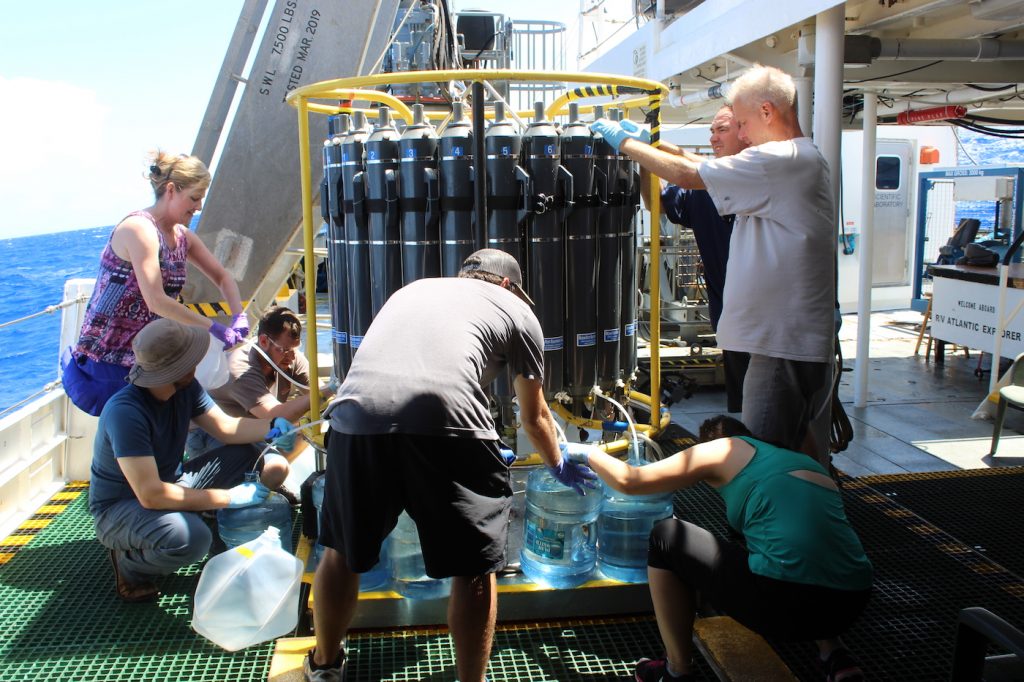
Collecting water from every bottle into sterile containers, each labeled for its future destination, scientists aboard the R.V. Atlantic Explorer swarm around the CTD to get their samples. It was an incredible sight of cooperation and teamwork. All three labs had members collecting water or helping fill canisters from the first cast of samples, so the CTD was surrounded.
I was told how much time is of the essence while on a research cruise but watching sampling unfold throughout the day really showed me why. As soon as the CTD is ready to be plunged back into the ocean, it is guided back out and into the deep blue. Then the clock starts counting down for lab members. They aim to finish filtering and collecting round of samples before they have to go out and receive the next batch from the CTD.
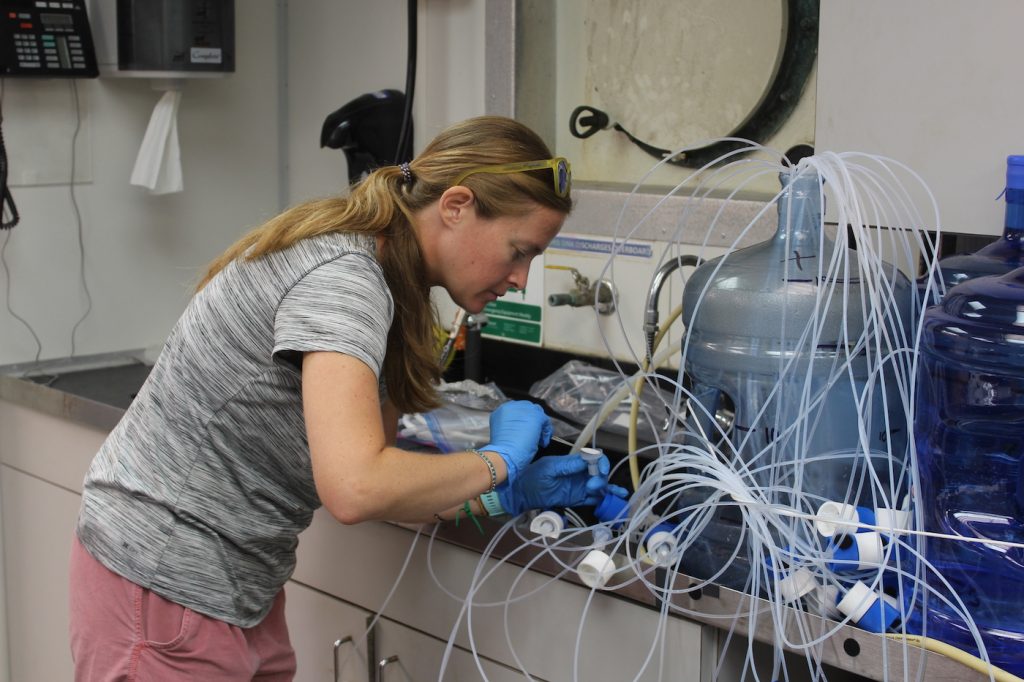
Leanne Powers prepares filters for water samples. 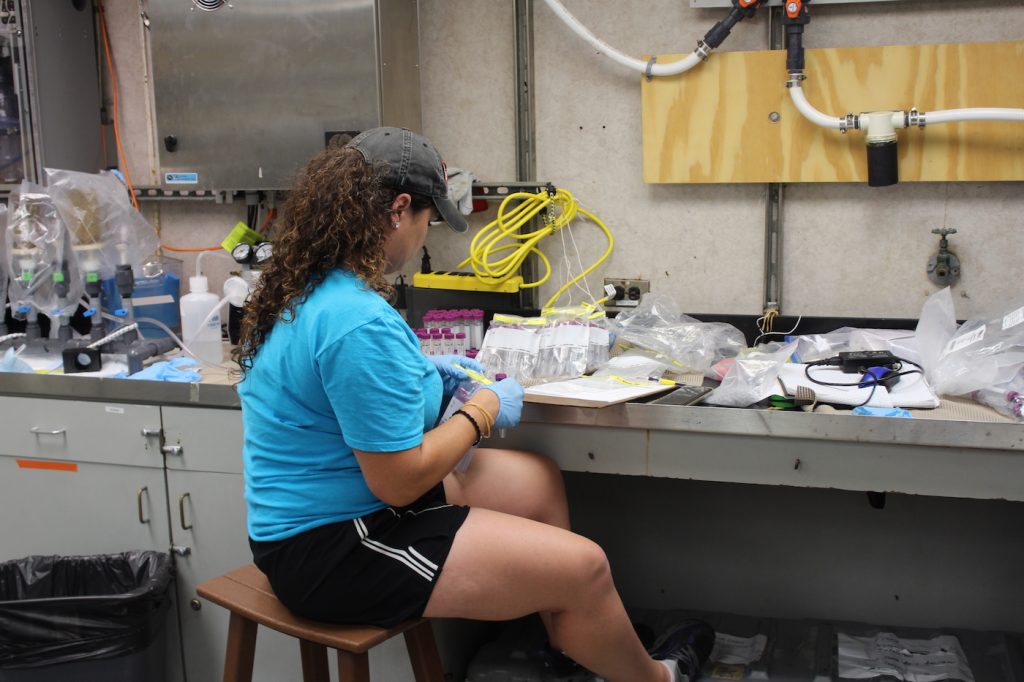
Ashley Hollins labeling vials for incoming samples
Based on the depth the CTD is set to go on an individual run, the time it takes to travel up and down in the water may vary from half an hour to almost six full hours. Moments of rest are few and far between as everyone on board strives to stick to the schedule and have their equipment ready for yet another round.
The largest lab on the research vessel is occupied by the University of Maryland Center for Environmental Science’s Feng Chen lab at the Institute of Marine and Environmental Technology and by Barbra Ferrell, Shawn Polston, and Jacob Dums from University of Delaware. Rough seas left half of Feng Chen’s lab members sick, but luckily fellow lab mates are willing to help the remaining few on this first day of sampling.
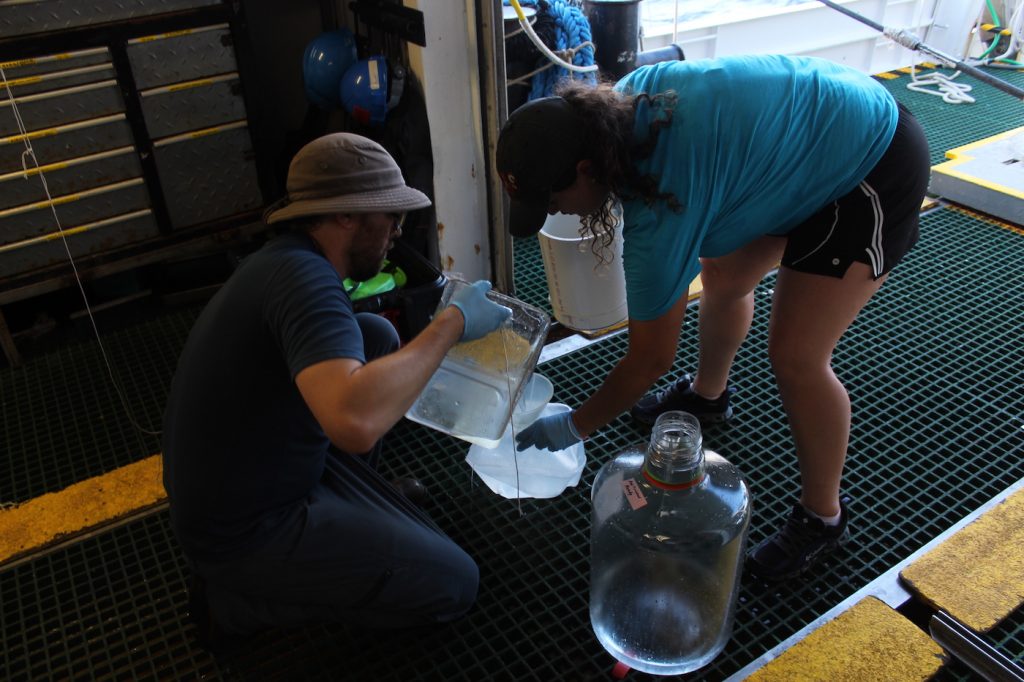
As both lab groups finish their rounds of water samples, they work together to acid wash their supplies in preparation for the next round. They hope they can finish their samples and sterilization before their 4 a.m. wake-up time rolls around to collect their next set of samples.
The research happening on this cruise is truly going on 24/7. There is always either a cast (group of samples) heading down in the water, researchers prepping their labs for incoming samples, and a full coffee pot for those who need it.
